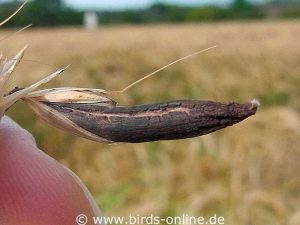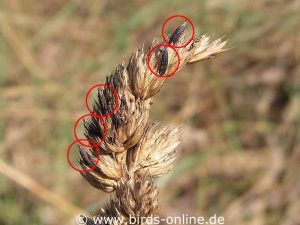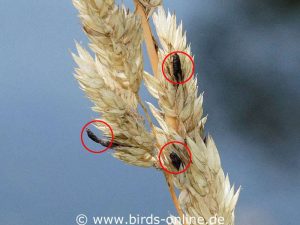- >>
- Birds Online – English
- >>
- Nutrition
- >>
- Healthy bird food from...
- >>
- Native grasses and cereals
- >>
- Be aware of ergot...
Be aware of ergot fungus

Feeding pet birds with wild grasses and millet panicles which you collected yourself is a healthy addition to their diet – but only if you do not feed them with grasses infected by a poisonous sac fungus. The survival structure of the fungus Claviceps purpurea looks similar to a real seed but is slightly larger and of a dark purple or matte black colour.
Usually, this fungus infects grain ears of rye, wheat or triticale (a hybrid of wheat and rye) and sometimes oat and barley. Wild grasses, however, can be infected as well. If you find grass panicles with long, dark “seeds” you should be cautious and not feed them to your birds.
The ergot fungus produces toxic alkaloids which can be dangerous to animals. For a human 5 to 10 grams of these “seeds” can be deadly. This means: If a small pet bird ingests even a tiny amount of infected grass seeds, there is a high chance this will be deadly!
You can find more information on ergot fungus on Wikipedia.
German – English translation: Sarah Wiechers


